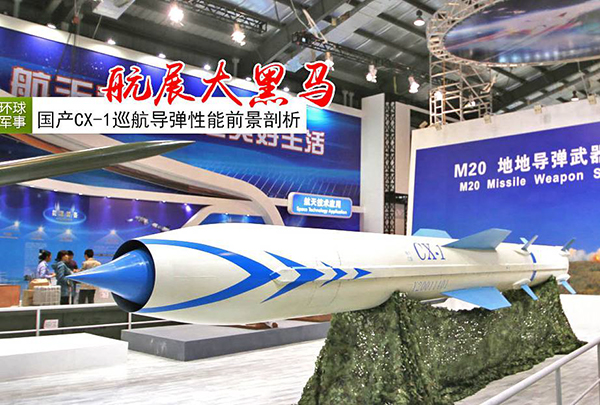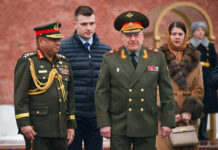On China’s Strategy And Armed Forces
For 20 years, the US Department of Defense (DoD) has provided Congress with an annual report on military and security developments involving the People’s Republic of China (PRC). These reports have assessed the contours of China’s national strategy, its approach to security and military affairs and potential changes in the PRC’s armed forces over the next 20 years, among other matters.
2020 marks an important year for the People’s Liberation Army (PLA) as it works to achieve important modernization milestones ahead of the Chinese Communist Party’s (CCP) broader goal to transform China into a “moderately prosperous society” by the CCP’s centenary in 2021. As the United States continues to respond to the growing strategic challenges posed by the PRC, 2020 offers a unique opportunity to assess both the continuity and changes that have taken place in the PRC’s strategy and armed forces over the past two decades.
ALSO READ: US warns China against Taiwan attack
DoD’s first annual report to Congress in 2000 assessed the PRC’s armed forces at that time to be a sizable but mostly archaic military that was poorly suited to the CCP’s long-term ambitions. The report recognized the CCP’s objective was for the PRC to become a “strong, modernized, unified, and wealthy nation.” Despite these great power aspirations, the PLA lacked the capabilities, organization, and readiness for modern warfare. Yet the CCP understood these deficiencies and set long-term goals to strengthen and transform its armed forces in a manner commensurate with its aspirations to strengthen and transform China.
DoD’s 2000 report assessed that the PLA was slowly and unevenly adapting to the trends in modern warfare. The PLA’s force structure and capabilities focused largely on waging large-scale land warfare along China’s borders. The PLA’s ground, air, and naval forces were sizable but mostly obsolete. Its conventional missiles were generally of short range and modest accuracy. The PLA’s emergent cyber capabilities were rudimentary; its use of information technology was well behind the curve; and its nominal space capabilities were based on outdated technologies for the day. Further, China’s defense industry struggled to produce high-quality systems. Even if the PRC could produce or acquire modern weapons, the PLA lacked the joint organizations and training needed to field them effectively. The report assessed that the PLA’s organizational obstacles were severe enough that if left unaddressed they would “inhibit the PLA’s maturation into a world-class military force.”
Two decades later, the PLA’s objective is to become a “world-class” military by the end of 2049—a goal first announced by General Secretary Xi Jinping in 2017. Although the CCP has not defined what a “world-class” military means, within the context of the PRC’s national strategy it is likely that Beijing will seek to develop a military by mid-century that is equal to—or in some cases superior to—the U.S. military, or that of any other great power that the PRC views as a threat. As this year’s report details, the PRC has marshalled the resources, technology, and political will over the past two decades to strengthen and modernize the PLA in nearly every respect. Indeed, as this report shows, China is already ahead of the United States in certain areas such as:
Shipbuilding: The PRC has the largest navy in the world, with an overall battle force of approximately 350 ships and submarines including over 130 major surface combatants. In comparison, the U.S. Navy’s battle force is approximately 293 ships as of early 2020.
ALSO READ: China creating a flashpoint in South China Sea
Land-based conventional ballistic and cruise missiles: The PRC has more than 1,250 ground-launched ballistic missiles (GLBMs) and ground-launched cruise missiles (GLCMs) with ranges between 500 and 5,500 kilometers. The United States currently fields one type of conventional GLBM with a range of 70 to 300 kilometers and no GLCMs.
Integrated air defense systems: The PRC has one of the world’s largest forces of advanced long-range surface-to-air systems—including Russian-built S-400s, S-300s, and domestically produced systems—that constitute part of its robust and redundant integrated air defense system architecture.
More striking than the PLA’s staggering amounts of new military hardware are the recent sweeping efforts taken by CCP leaders that include completely restructuring the PLA into a force better suited for joint operations, improving the PLA’s overall combat readiness, encouraging the PLA to embrace new operational concepts, and expanding the PRC’s overseas military footprint.
Despite the PLA’s progress over the past 20 years, major gaps and shortcomings remain. The PRC’s leaders are aware of these problems, and their strategy envisions the PLA undergoing almost 30 more years of modernization and reform. Of course, the CCP does not intend for the PLA to be merely a showpiece of China’s modernity or to keep it focused solely on regional threats. As this report shows, the CCP desires the PLA to become a practical instrument of its statecraft with an active role in advancing the PRC’s foreign policy, particularly with respect to the PRC’s increasingly global interests and its aims to revise aspects of the international order.
Given the continuity in the PRC’s strategic objectives, the past 20 years offer a harbinger for the future course of the PRC’s national strategy and military aspirations. Certainly, many factors will determine how this course unfolds. What is certain is that the CCP has a strategic end state that it is working towards, which if achieved and its accompanying military modernization left unaddressed, will have serious implications for U.S. national interests and the security of the international rules-based order.


















